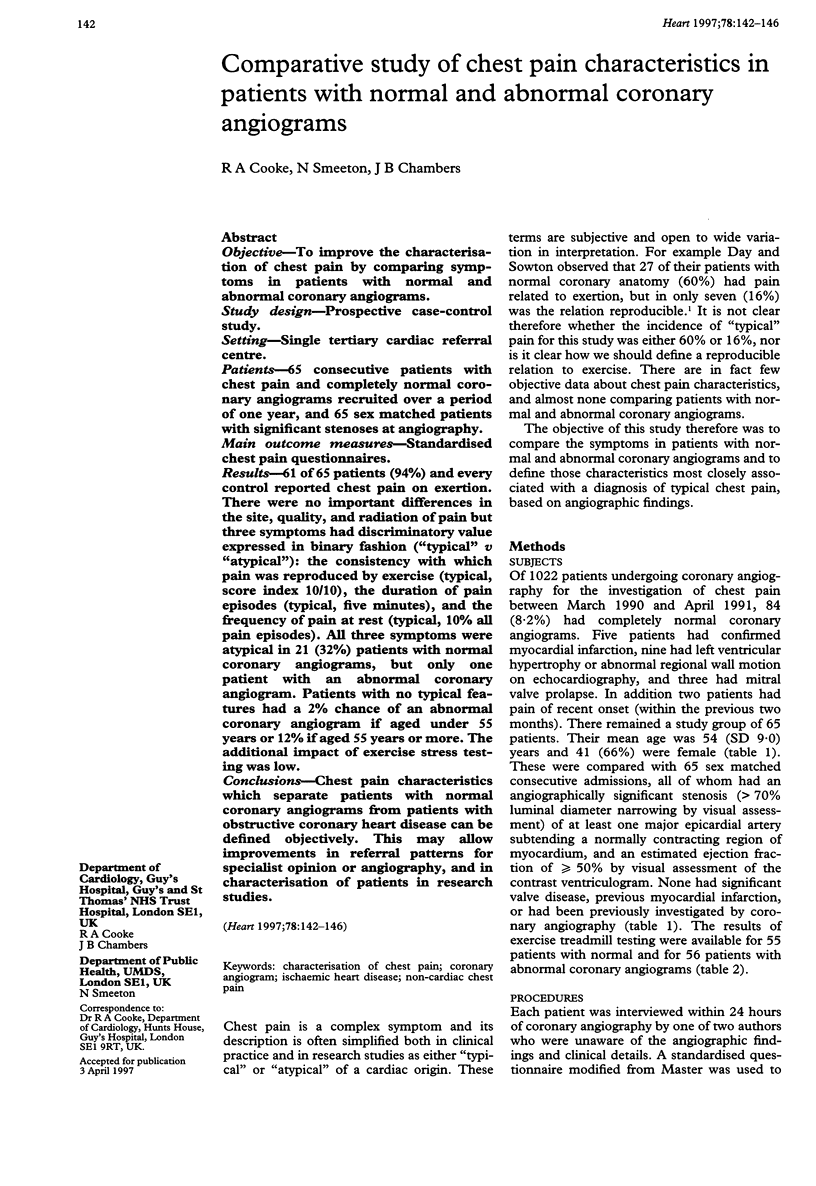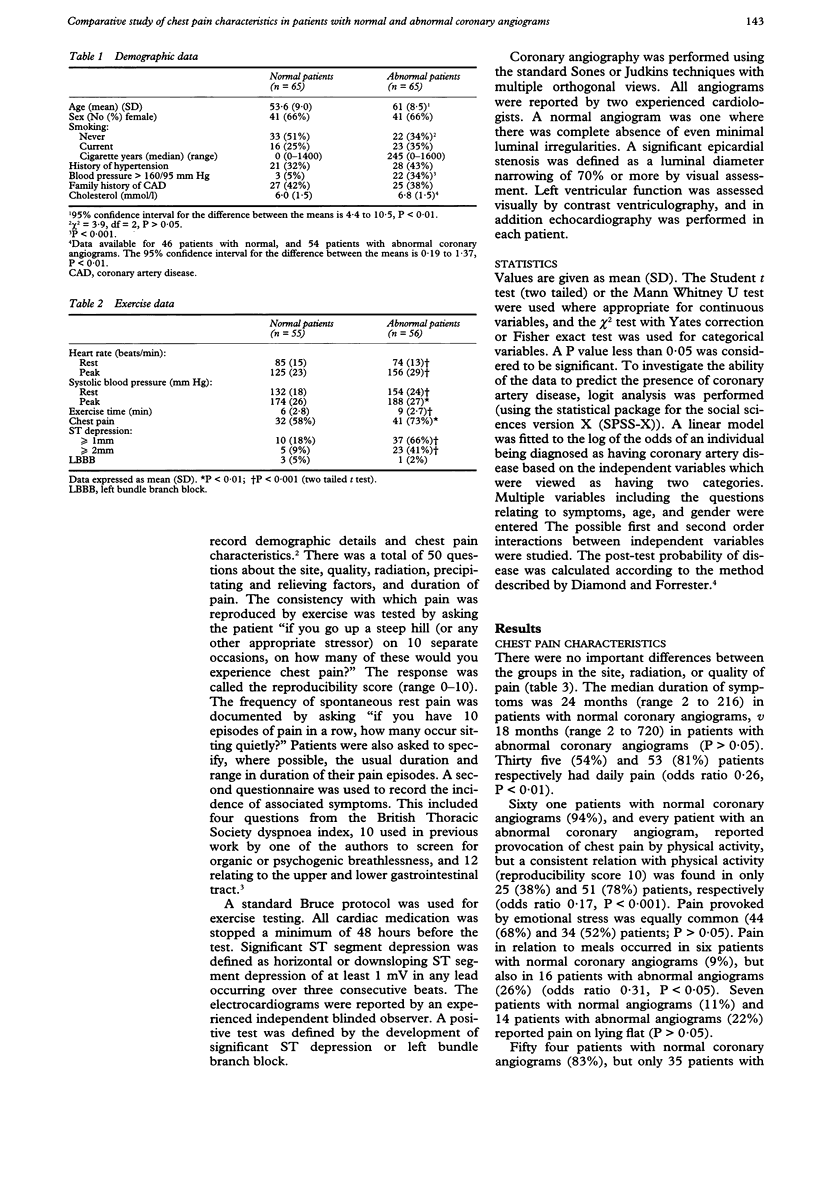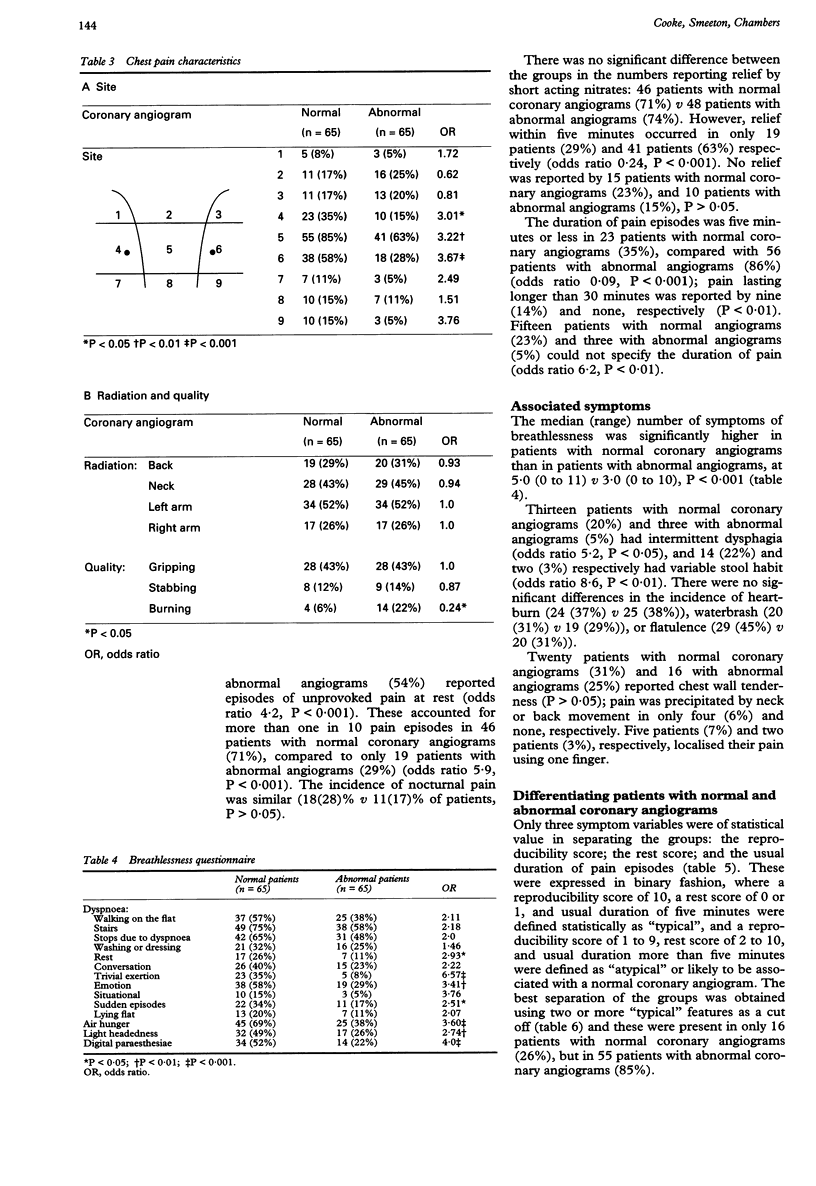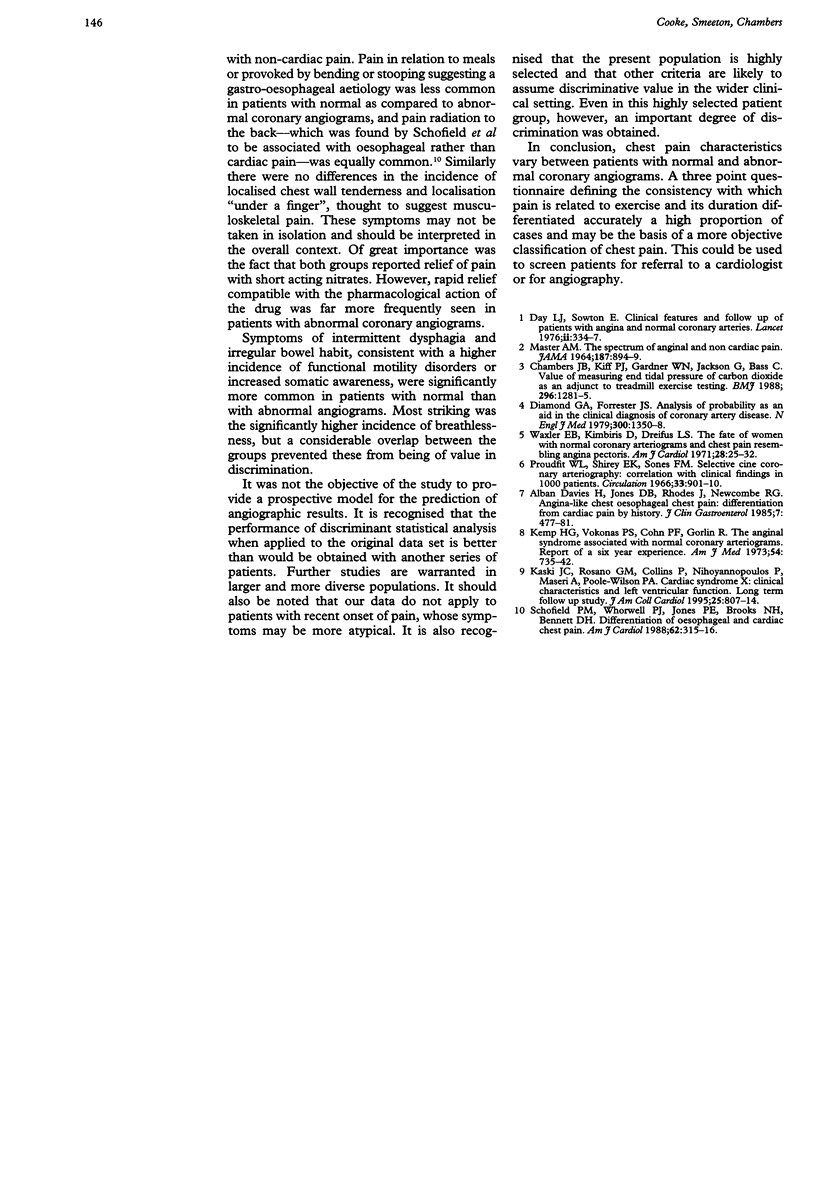Abstract
OBJECTIVE: To improve the characterisation of chest pain by comparing symptoms in patients with normal and abnormal coronary angiograms. STUDY DESIGN: Prospective case-control study. SETTING: Single tertiary cardiac referral centre. PATIENTS: 65 consecutive patients with chest pain and completely normal coronary angiograms recruited over a period of one year, and 65 sex matched patients with significant stenoses at angiography. MAIN OUTCOME MEASURES: Standardised chest pain questionnaires. RESULTS: 61 of 65 patients (94%) and every control reported chest pain on exertion. There were no important differences in the site, quality, and radiation of pain but three symptoms had discriminatory value expressed in binary fashion ("typical" v "atypical"): the consistency with which pain was reproduced by exercise (typical, score index 10/10), the duration of pain episodes (typical, five minutes), and the frequency of pain at rest (typical, 10% all pain episodes). All three symptoms were atypical in 21 (32%) patients with normal coronary angiograms, but only one patient with an abnormal coronary angiogram. Patients with no typical features had a 2% chance of an abnormal coronary angiogram if aged under 55 years or 12% if aged 55 years or more. The additional impact of exercise stress testing was low. CONCLUSIONS: Chest pain characteristics which separate patients with normal coronary angiograms from patients with obstructive coronary heart disease can be defined objectively. This may allow improvements in referral patterns for specialist opinion or angiography, and in characterisation of patients in research studies.
Full text
PDF




Selected References
These references are in PubMed. This may not be the complete list of references from this article.
- Chambers J. B., Kiff P. J., Gardner W. N., Jackson G., Bass C. Value of measuring end tidal partial pressure of carbon dioxide as an adjunct to treadmill exercise testing. Br Med J (Clin Res Ed) 1988 May 7;296(6632):1281–1285. doi: 10.1136/bmj.296.6632.1281. [DOI] [PMC free article] [PubMed] [Google Scholar]
- Davies H. A., Jones D. B., Rhodes J., Newcombe R. G. Angina-like esophageal pain: differentiation from cardiac pain by history. J Clin Gastroenterol. 1985 Dec;7(6):477–481. doi: 10.1097/00004836-198512000-00007. [DOI] [PubMed] [Google Scholar]
- Day L. J., Sowton E. Clinical features and follow-up of patients with angina and normal coronary arteries. Lancet. 1976 Aug 14;2(7981):334–337. doi: 10.1016/s0140-6736(76)92591-5. [DOI] [PubMed] [Google Scholar]
- Diamond G. A., Forrester J. S. Analysis of probability as an aid in the clinical diagnosis of coronary-artery disease. N Engl J Med. 1979 Jun 14;300(24):1350–1358. doi: 10.1056/NEJM197906143002402. [DOI] [PubMed] [Google Scholar]
- Kaski J. C., Rosano G. M., Collins P., Nihoyannopoulos P., Maseri A., Poole-Wilson P. A. Cardiac syndrome X: clinical characteristics and left ventricular function. Long-term follow-up study. J Am Coll Cardiol. 1995 Mar 15;25(4):807–814. doi: 10.1016/0735-1097(94)00507-M. [DOI] [PubMed] [Google Scholar]
- Kemp H. G., Jr, Vokonas P. S., Cohn P. F., Gorlin R. The anginal syndrome associated with normal coronary arteriograms. Report of a six year experience. Am J Med. 1973 Jun;54(6):735–742. doi: 10.1016/0002-9343(73)90060-0. [DOI] [PubMed] [Google Scholar]
- MASTER A. M. THE SPECTRUM OF ANGINAL AND NONCARDIAC CHEST PAIN. JAMA. 1964 Mar 21;187:894–899. doi: 10.1001/jama.1964.03060250012002. [DOI] [PubMed] [Google Scholar]
- Proudfit W. L., Shirey E. K., Sones F. M., Jr Selective cine coronary arteriography. Correlation with clinical findings in 1,000 patients. Circulation. 1966 Jun;33(6):901–910. doi: 10.1161/01.cir.33.6.901. [DOI] [PubMed] [Google Scholar]
- Schofield P. M., Whorwell P. J., Jones P. E., Brooks N. H., Bennett D. H. Differentiation of "esophageal" and "cardiac" chest pain. Am J Cardiol. 1988 Aug 1;62(4):315–316. doi: 10.1016/0002-9149(88)90234-2. [DOI] [PubMed] [Google Scholar]
- Waxler E. B., Kimbiris D., Dreifus L. S. The fate of women with normal coronary arteriograms and chest pain resembling angina pectoris. Am J Cardiol. 1971 Jul;28(1):25–32. doi: 10.1016/0002-9149(71)90030-0. [DOI] [PubMed] [Google Scholar]


